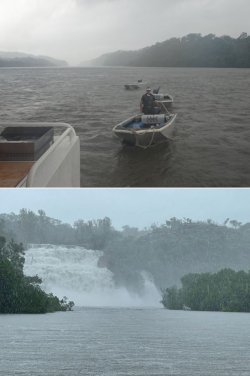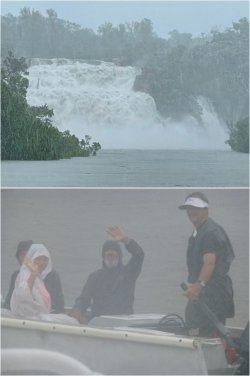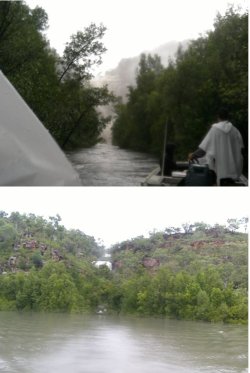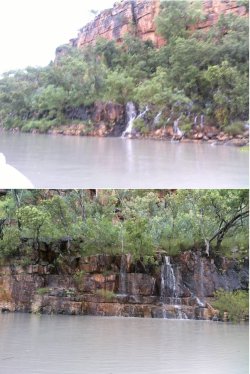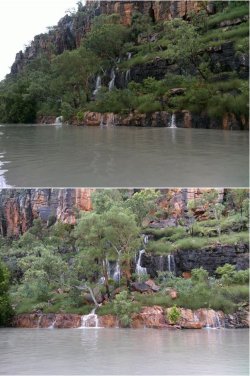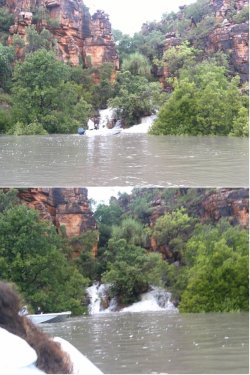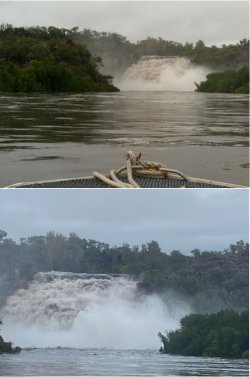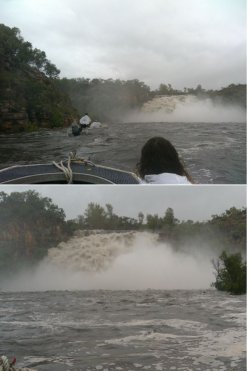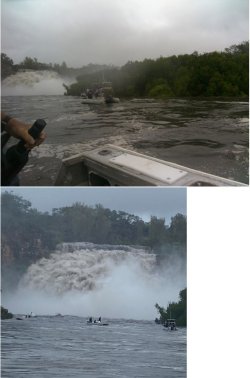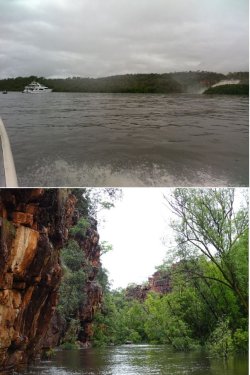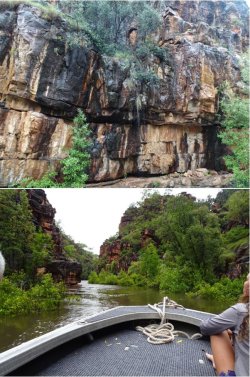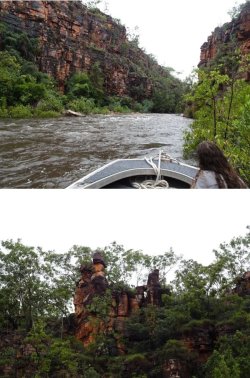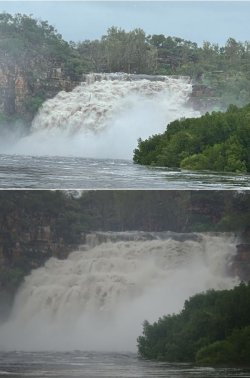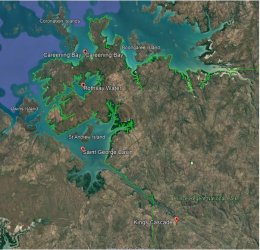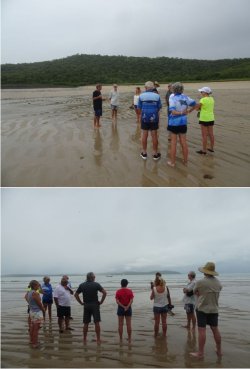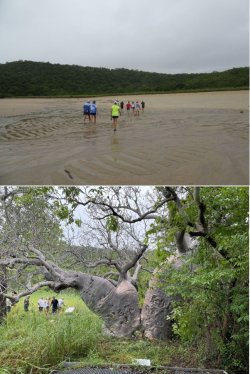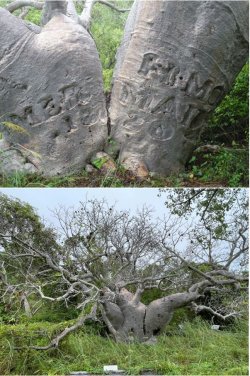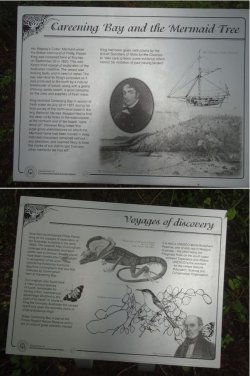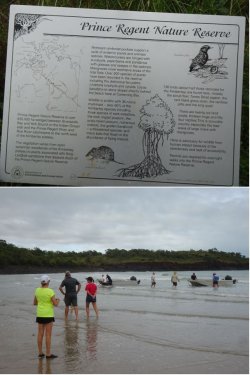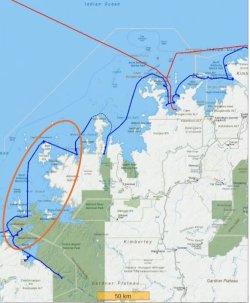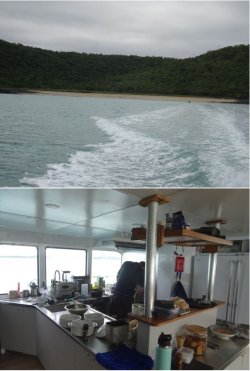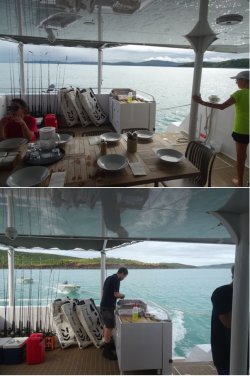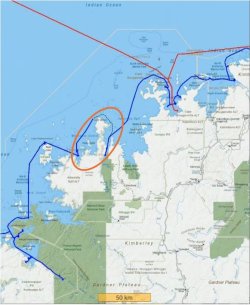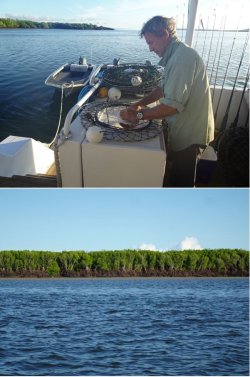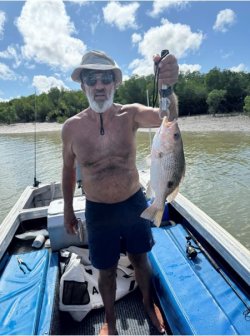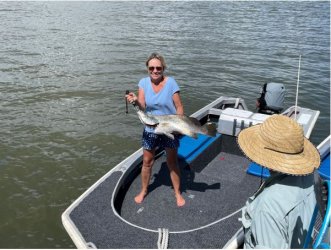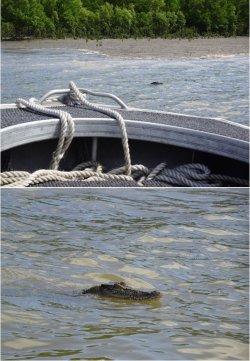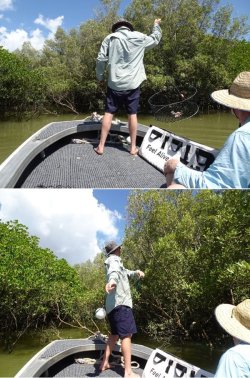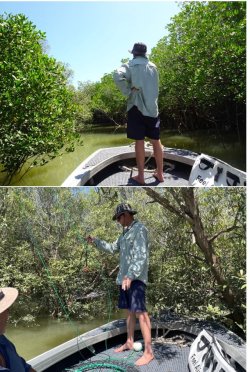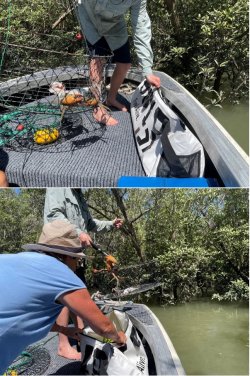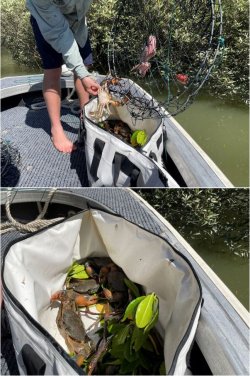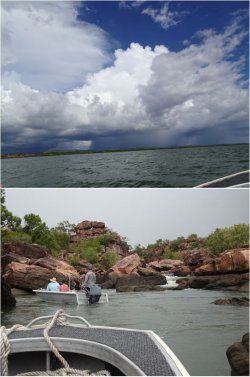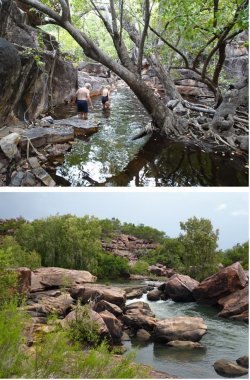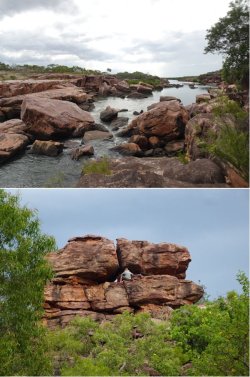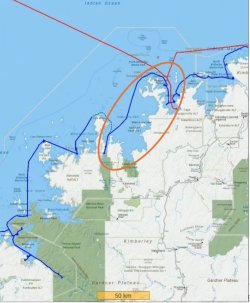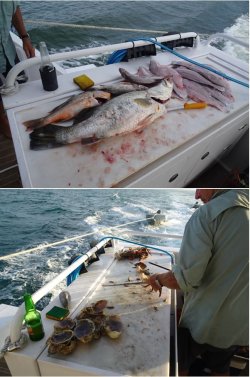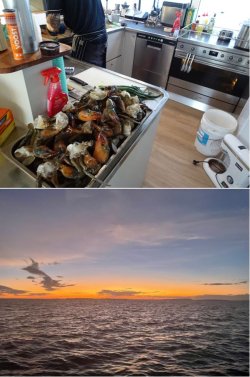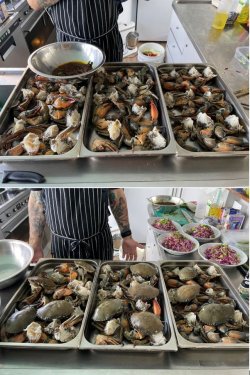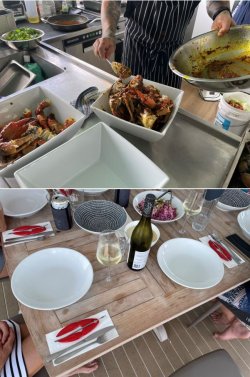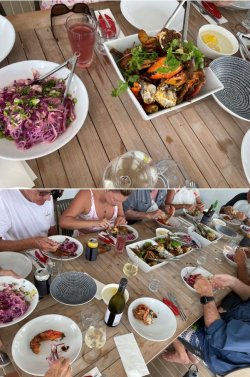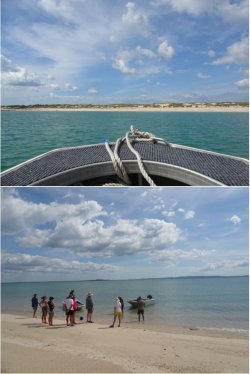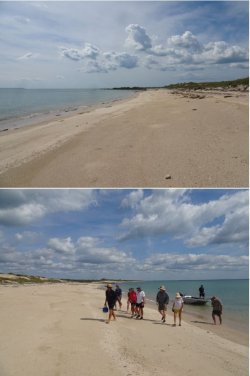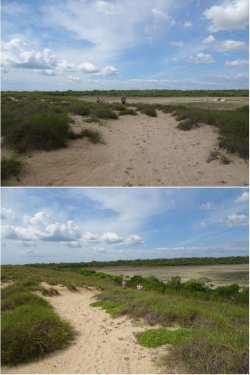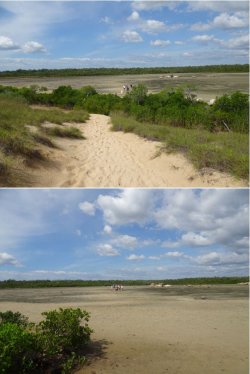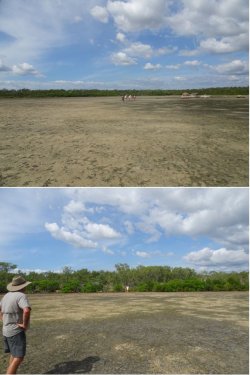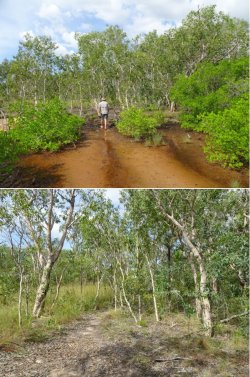Next day was the half-way point of the voyage and visiting another Kimberley icon – King Cascades, also often called Kings Cascade, about 5km up the Prince Regent River and lying within a lagoon. It is the site of the well-publicised crocodile attack in 1987 when American woman Ginger Meadows ignored warnings not to go into the water and was fatally attacked by a large crocodile.
We were calmly anchored overnight in St George Basin after our balmy evening but awoke to steady heavy rain that had begun in the early hours. Tropical Cyclone Errol had moved E, well to our S, and had crossed the coast as a rain-bearing depression. No wind, but it was bucketing down from the low and heavy spinoff cloud generated by TC Errol.
I’ve marked our location on the radar image.
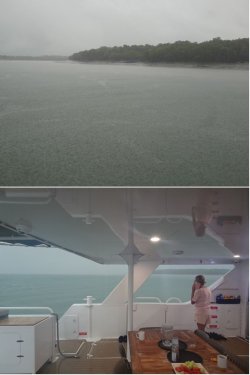
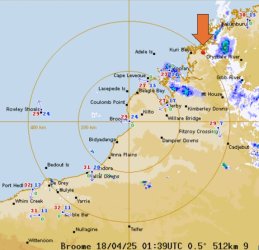
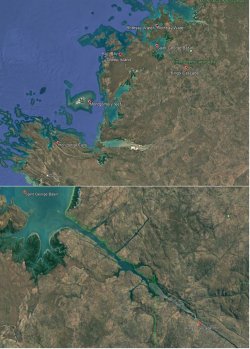
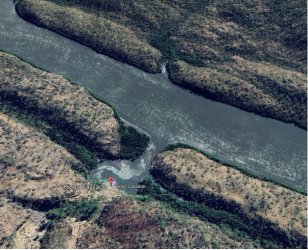
The boat moved upriver during the morning, and we reached the Cascades a little after noon. It was cranking.
The skipper took the boat into the lagoon and nosed up under the falls to a smashing torrent dunking for those who braved it.
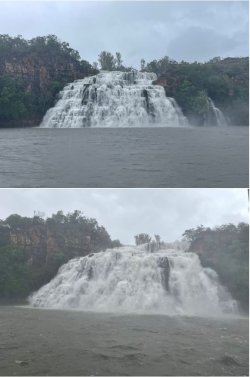
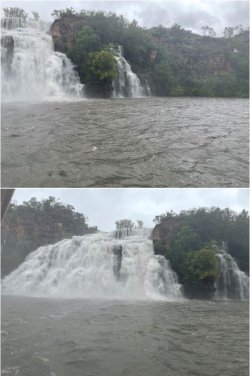
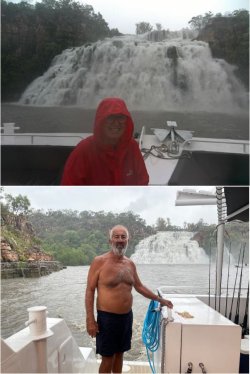
It was 18 April this year, which happened to be Good Friday. We were certainly seeing a flood of biblical proportions.
In contrast, here’s what it was like on 23 April 2012.
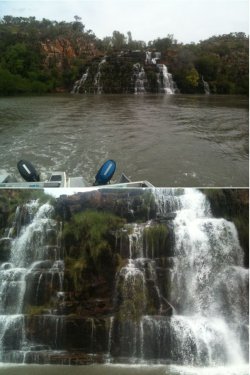
This year there was no prospect of climbing to the top as we did in 2012.
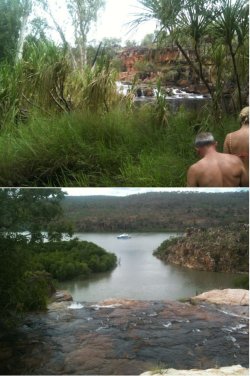
We then moved back into the river and anchored outside of the lagoon, directly in line with the falls.
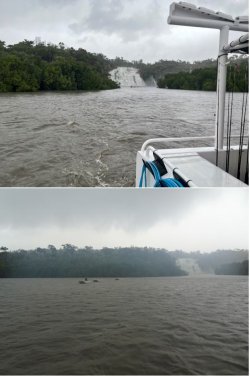
It was still raining heavily as the dinghies were brought back to the boat after being disconnected for the tight turn in the lagoon. Time for lunch while watching the flow build, before venturing out in the dinghies for more exploration.
